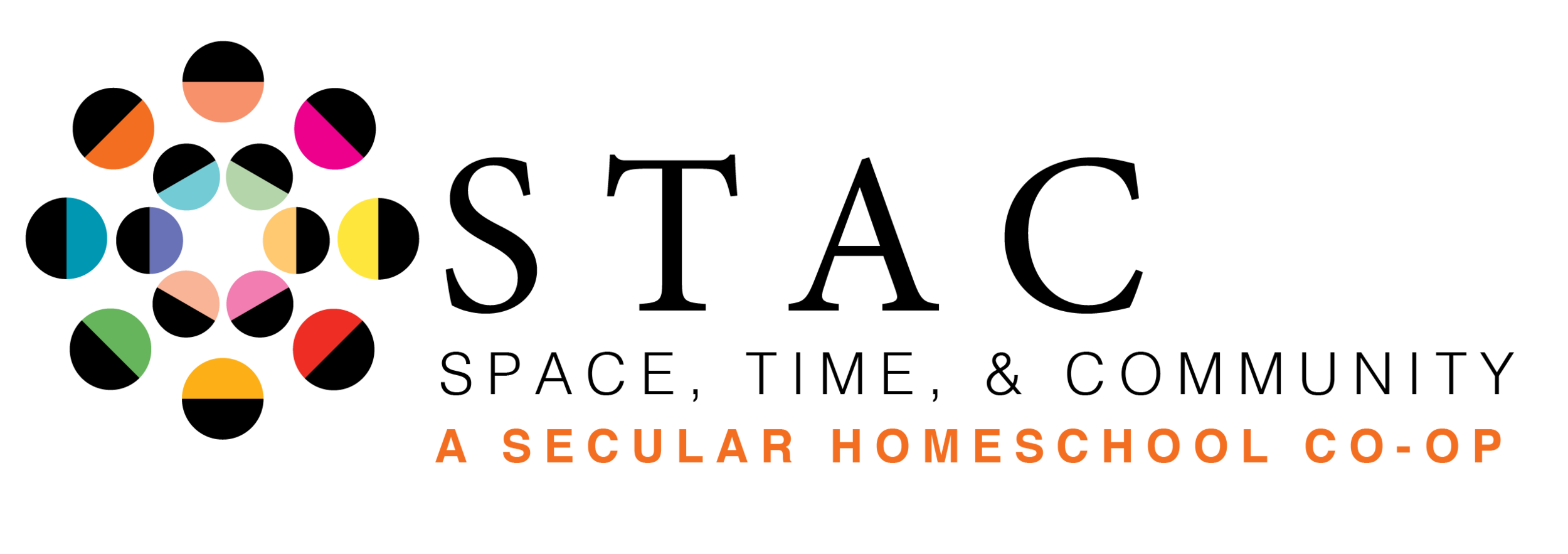Critical Thinking in the Elementary Classroom: Modeling Good Questions, Emotional Regulation, and Joy
The people who choose to offer classes at STAC come from a wide variety of backgrounds with all sorts of experience. One thing that ties our instructors together, however, is an interest in teaching critical thinkers. Kids at STAC don’t just memorize facts, they practice analyzing those facts and understanding the big picture. And yes, that includes even our youngest learners! This month’s post is from Kelly Elmore, who teaches all sorts of cool classes for kids from preschool through adult.
__________________________________________________________________________________________
A focus on critical thinking is a key part of why my family loves the teachers and classes at STAC. Sometimes, though, it’s hard for people to imagine how that might look in an elementary classroom; they might ask whether 6 year olds are really capable of learning critical thinking? I’m sure different elementary teachers have different ways of encouraging critical thinking skill development, but here’s what I do (and don’t do)!
Imagine me on the floor, sitting among a group of 10 children, all between 7 and 10 years old. Imagine that they are studying the ancient Hebrew people and the Hebrew story of the Exodus out of Egypt. Now imagine that I say, “What do you believe is true about the Exodus? Did it happen for real or not?”
I hope you felt a little pang of discomfort. I can tell you what would happen next. Several students, having no idea what’s going on, would sit quietly. Several others would quickly make up opinions based on no evidence at all, just so they could answer and please the teacher. A few might reference their parents’ religious beliefs and form their opinion that way. And NONE OF THAT would be critical thinking.
These students are not prepared for the question I asked them; they don’t have the maturity, the knowledge, or the intellectual skills to answer that question. To ask it, then, is to set them up for failure. Instead, my job as their teacher is to show them how people think about intellectual questions.
Instead, imagine that we discuss what historians do, what archeologists do, what Biblical scholars do, how they gather evidence, how they look at written sources like the Hebrew stories and at arcaeological sources like the attempts to find evidence of the Exodus in the desert. I could tell them about the Jewish scholar I heard talking about this topic at the Decatur book festival, weighing different kinds of evidence. I could explain how questions like this get answered, rather than asking them to answer it. And even though I never ask them their thoughts at all, they are learning critical thinking; they are learning the methods of thinking. I model that asking good questions always precedes knowing answers. I help them imagine themselves as historians, gathering up evidence and trying to figure out the answers to hard questions.
Most of the critical thinking work I do in any class in any age group is all about modeling. As we study history or science or literature or Latin at any level, I model my own thought processes out loud for them. I play the role of the fully developed frontal lobe they will one day have; I manage their metacognition out loud so that they can learn the right kind of questions to ask themselves: How do I know? Do I understand? Can I think of examples? Can I think of counterexamples? How certain am I? What questions do I have?
The example above shows this modeling in an elementary history class. In Mystery Science, this looks like discussions about their previous knowledge and current understandings before we experiment and discussion about how our knowledge changed after experiments. In Little Literature, this looks like asking “How do you know?” when they offer a conclusion about a book and modeling returning to the text to ground our ideas. In elementary math, this looks like me asking them questions when they are stuck to teach them the kind of questions they need to ask themselves in order to solve problems on their own one day.
Critical thinking also requires emotional regulation, and the elementary classroom is a great place to practice those skills as well. When a student is frustrated, I might stop the whole class and help them practice taking a few deep breaths. When a student gets angry, the whole class might stop and practice using respectful words to express anger. When someone is confused, the whole class might stop and practice noticing confusion, celebrating how confusion opens a door to a new question, and asking for help. Later, when they face hard problems that require their critical thinking skills, they will be able to manage their difficult emotions first to free up cognitive space for clear thought.
And finally and perhaps most important, I teach through modeling that fun and interest and joy can be the results of asking and answering these metacognitive questions and thinking about complicated questions. I show them with my own playfulness that asking questions about the world is a delightful game and fun way to play with our minds. We act out the stories, use our hands and bodies to engage with the world around us, and discuss our scientific observations with friends and playmates. We laugh and play with knowledge because the natural response to learning is joy. I want them to leave my classes thinking that a life of intellectual inquiry, a life filled with interesting questions to be researched and understood, a life of critical thinking is a fascinating, fun-filled life.
